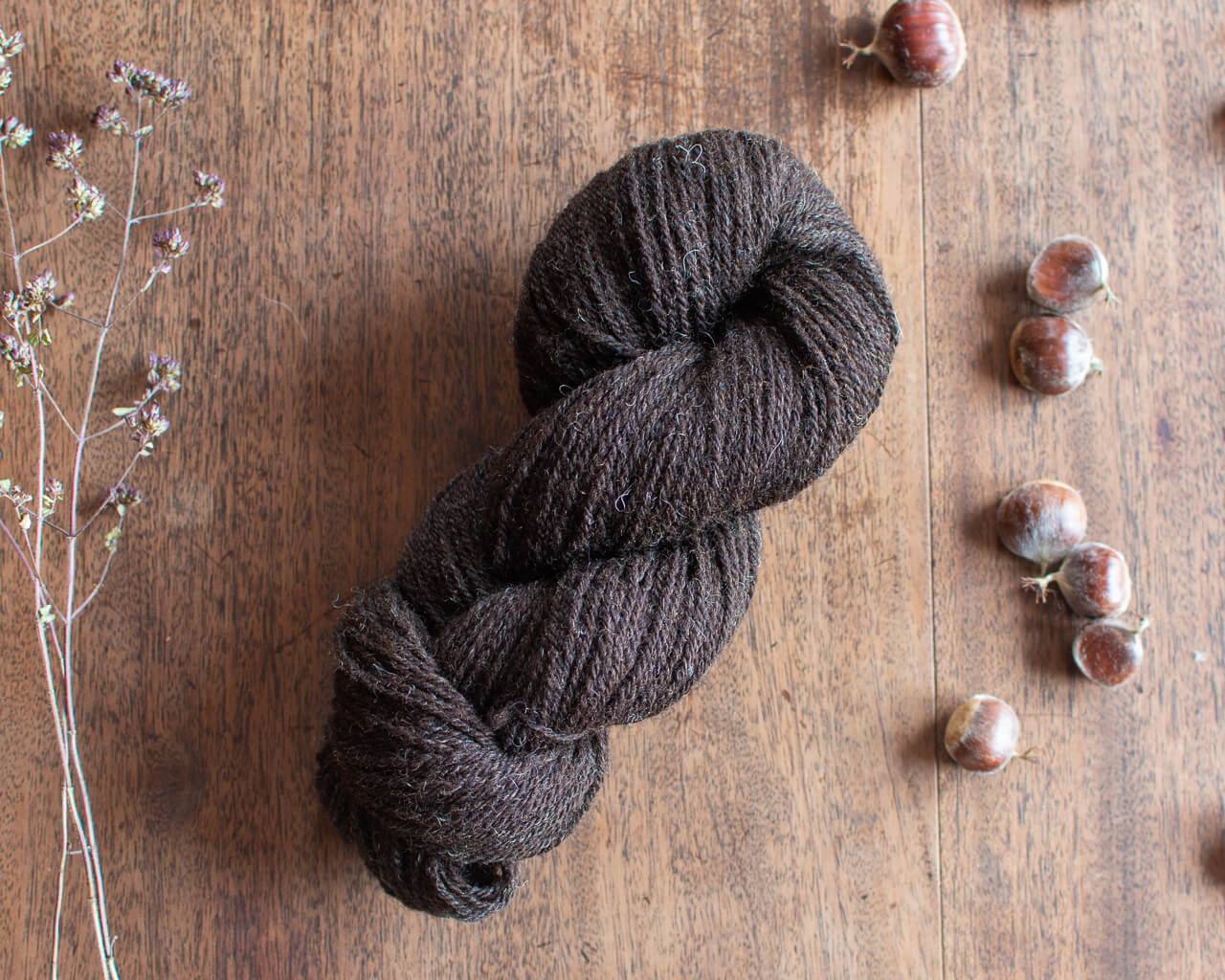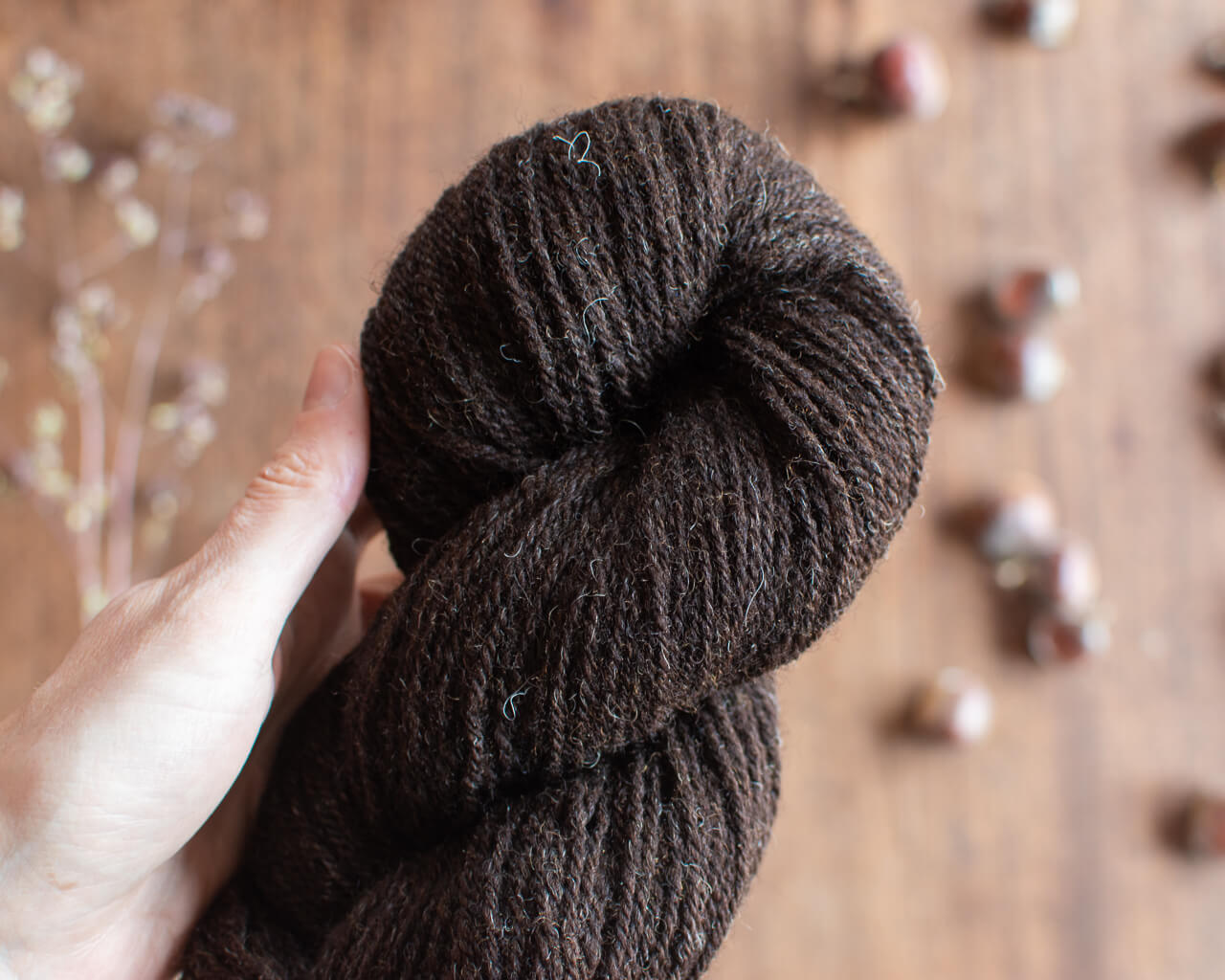I love hand-knit socks. I love wearing them, knitting them, looking after them. But there’s no question that socks demand a lot of the yarn they’re knit from – they experience a lot of wear, and therefore need to withstand a lot of friction and washing.
There are a few things to keep in mind to make sure that your socks are going to last a long time. There are certain qualities you can look for in a potential sock yarn, which I’ll talk about in a bit, but by far the most important thing is your knitting gauge or tension.
Socks should be knitted as tight as you can, on the smallest needles you can comfortably manage for the yarn you’re using. The weight of yarn doesn’t matter, but your stitches should be really dense – using a much smaller needle than you usually would to make a garment or shawl from the same yarn. The closer together the stitches, the stronger the resulting fabric is. It means the yarn doesn’t have space to move around and rub against the other stitches as much – one of the things that makes yarn wear out.
If you’re a loose knitter (like me) this can take some getting used to, and with some lighter-weight yarns you might find yourself using smaller needles than you’d ever imagined. It’s worth it.

Onto the yarn. You don’t have to stick to yarn called ‘sock yarn’ to make good socks. Both the fibre and the construction used to make the yarn are important, and I’m going to give you five key points to look for. Yarns specifically designed for socks are a great place to start, as (one hopes) they will have taken these points into account when creating the yarn. But I’m hoping this will enable you to pick out good candidates even if they’re not marketed for socks (and maybe spot ones where the yarn might not be as suitable for socks as is claimed!).
One thing to note before I start: I’m talking about natural fibres here. I intensely dislike the use of plastic in yarn, so am talking about natural-fibre, non-superwash yarn. I don’t stock or buy any yarn or fibres that include nylon or a superwash treatment. No judgement on you if those things make your life easier, I’m just stating my personal preferences here.
The first two points relate to the style of the spinning.
1. Worsted spinning
There are two main styles of spinning: woollen and worsted. A lot of commercial yarns these days are worsted-spun, but it will depend on the brand and range. Worsted-spun yarns are spun from fibre that has been prepared so that all the staples (individual fibres) run parallel to each other. This makes a smooth, compact, and generally stronger yarn, that often has good stitch definition.
Woollen-spun, by comparison, has staples that run in every direction and squiggle around each other. This results in a light, plump, warm yarn that’s usually not as strong as worsted. Woollen spun yarns are great for colourwork and steeks, because the structure means the yarn is more ‘grippy’ and is generally less crisp-looking. Marina Skua Mendip 4-Ply, for example, is woollen spun.
2. High twist
Twist is what turns loose fluff into yarn. If you’ve worked with lopi or similar loosely-spun yarn, you’ll know that it’s very easy to break with your hands. Adding twist forces the fibres closer together, greatly increasing the amount of friction between the staples, creating a lot of tensile strength. And generally, the more twist you add, the stronger the yarn gets – but this also reduces the softness of the resulting yarn. Even a very fine fibre won’t feel very soft if it’s too highly twisted – this is why my Caia Baby Alpaca has a fairly low (or loose) twist. It’s a yarn that’s all about elegant softness, and I wouldn’t recommend it for items where serious durability is needed.
And that takes us to the types of fibres that make a good, strong yarn. First up is the elephant in the room – softness.
3. Strong fibres
The main factor in the softness of a yarn is the fineness of the fibre it’s spun from, generally measured in microns. The lower the micron count, the finer the fibre. This means that the average diameter of the staples is lower. And that means fine staples are mostly weaker than coarse ones, and will wear through faster. Silk is a bit of an exception, because it has extraordinary tensile strength and is structured quite differently to other animal or plant fibres.
So here we come to it: softer isn’t always better. Yes, soft yarn is nice, but it’s rarely going to make a really strong yarn. That superfine Merino probably won’t last very long.
A lot of yarns specifically designed for socks will include a fibre chosen for its strength. The most common is nylon, which I don’t go for (and don’t actually think makes a significantly more durable yarn than a lot of natural alternatives). Alternatives can be fibres like mohair or nettle/ramie – though some pure wool yarns with a higher micron count will be strong enough on their own.
4. Long staple length
This ties into the strength of the fibre and the spinning style. Worsted spinning by its nature requires a long staple length (a minimum of 5 cm or 2”), as part of the process involves removing shorter fibres. A yarn spun from shorter staples will be weaker, because within any given length, you’ll have more individual little fibres, therefore more points at which they can pull away from each other. Longer staples create a stronger yarn, because there are fewer breaks within that length.
The trouble with picking yarn based on staple length is that it’s very difficult to tell how long the staples are. Some breeds of sheep can grow very long fleeces (e.g. Bluefaced Leicester, Teeswater, Wensleydale, Romney, Cotswold) but it might be that they’ve been shorn before the fleece has reached that length. The same goes for mohair (from angora goats) and alpaca.
Reeled silk has an incredibly long filament – often over a kilometre. But most knitting yarns containing silk will be spun silk, which is often lower quality and cut shorter to make spinning easier. Linen and nettle also have very long staples, but when blended with other fibres are usually cut into shorter lengths to match the staple length they’re being blended with.
If you’re able to, it can help to try and tease a couple of individual fibres out of the yarn – often the yarn will be spun from similar-length staples so this will be a good indication of the average staple length. A minimum staple length of 13 cm / 5” is ideal.
5. Crimp
This is an interesting one, because it can be slightly in contradiction to some of the other points. Fibres with more crimp tend to be finer; coarser fibres often have less crimp. But crimp adds much-needed elasticity to a sock yarn. Some of the fibres I’ve mentioned – mohair, Teeswater, Wensleydale, silk, ramie etc. – can be stiff and inflexible, making for a less stretchy fabric (and often a less enjoyable knitting experience). Romney and Bluefaced Leicester are breeds that, in my opinion, have good crimp whilst still being long and strong, and are worthy candidates for inclusion.
A good bit of springiness in your yarn will make your hand-knitted socks easier to get on and off, fit better and be more comfortable to wear. And here I’m going off limited empirical evidence, but I’ve found that yarns that include a crimpy wool for a bit of elasticity seem to be a bit more durable under strain than those without. This is where a blend of fibres works nicely, including one with lovely crimp and one for a bit of strength.
–

I realise this is a lot of information, especially if you’re not familiar with how yarn is spun or the characteristics of various fibres. I do hope it’ll be a good starting point. If you’re interested in sheep breeds and other fibre animals, and the types of fibre they produce, I highly recommend The Fleece & Fiber Sourcebook by Deborah Robson and Carol Ekarius. In this post I’ve only mentioned fibres I’ve personally worked with, but there are many more and a world of options!
I hope to write another post once I've tested more of the natural-fibre non-superwash sock yarns on my list, and include some reviews of them once they've had a decent amount of wear. I don't stock a yarn that I'd recommend for socks, but it's high on my list of yarns I'd like to create once I have the budget!
The socks pictured in this post are the Fleos Socks knitted in Woolly Mammoth Fibre Company Natural Sock 4-Ply, and the Teth Socks in Hey Mama Wolf Sockyarn #04 – both patterns are my design.
Please do add a comment below if you have any questions about anything I’ve mentioned here.
![Quickbeam cardigan, silly slippers and a finished Pediment in hand-spun yarn [Marina Skua Ep 76]](http://marinaskua.com/cdn/shop/articles/Felted-Slippers-Knitting-Project-Marina-Skua-Knitting-Podcast-Blog_6b7a6b1e-b95a-488f-8915-627a7a87ef4b.jpg?v=1765099041&width=1920)








